
In this interactive object, learners identify the symptoms of fluid volume excess and fluid volume deficit.
- Subject:
- Health and Medical Science
- Nursing
- Date Added:
- 10/15/2010

In this interactive object, learners identify the symptoms of fluid volume excess and fluid volume deficit.

Students identify the meaning of urinary system word parts to analyze and define medical terms.
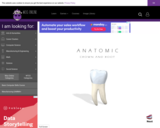
Students locate the enamel, cementum, cementoenamel junction, the anatomic crown, and the root of a tooth in this interactive lesson.

In this interactive object, learners sort antihypertensive medications into categories. Descriptions are provided.
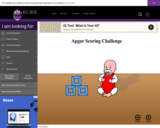
Learners consider the Apgar scores for several fictitious newborns. They are then given an Apgar score and proceed to create a situation in which a newborn would receive that rating.
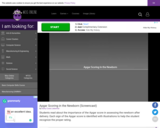
Students read about the importance of the Apgar score in assessing the newborn after delivery. Each sign of the Apgar score is identified with illustrations to help the student recognize the proper rating.

Students read an explanation of the values used for arterial blood gas analysis.

In this interactive object, learners read a scenario and identify the cranial nerve that is being assessed.

In this interactive exercise, learners review definitions of 26 terms and then test their knowledge in a matching exercise. Only six terms are included in the quiz; however, if the learner clicks “Restart,� more terms appear in random order.

Learners complete a crossword puzzle with terms that relate to common diseases and disorders of the blood. Immediate feedback is provided. Learners have the option to send an e-mail to their instructors notifying them that the learning object has been completed.
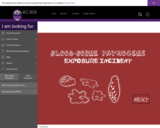
Learners read a scenario about a blood-borne pathogen incident in the workplace and decide the best action to take.

In this interactive object, learners read the definitions of prefixes and suffixes that relate to the digestive system. In a drag and drop exercise, the learners combine word components to form medical terms.

Learners test their knowledge in this drag-and-drop exercise by identifying coding errors in health care claim cases.

In this animated activity, students read directions on how to calibrate a thermometer.

In this learning object, learners examine the movement of fluid within the vascular system. A short quiz completes the activity.
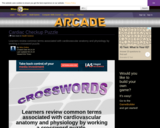
Learners review common terms associated with cardiovascular anatomy and physiology by working a crossword puzzle. Immediate feedback is provided after each term.

Learners complete a crossword puzzle with terms that relate to common diseases and disorders of the cardiovascular system. Immediate feedback is provided. Learners have the option to send an e-mail to their instructors notifying them that the learning object has been completed.

In this interactive object, learners read a case study and consider the signs and symptoms of schizophrenia and the appropriate nursing interventions.
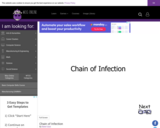
In this interactive object, learners identify nursing actions that help to prevent the spread of infection.
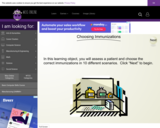
In this highly interactive object, learners read client case studies and then select the vaccines that are appropriate to administer.